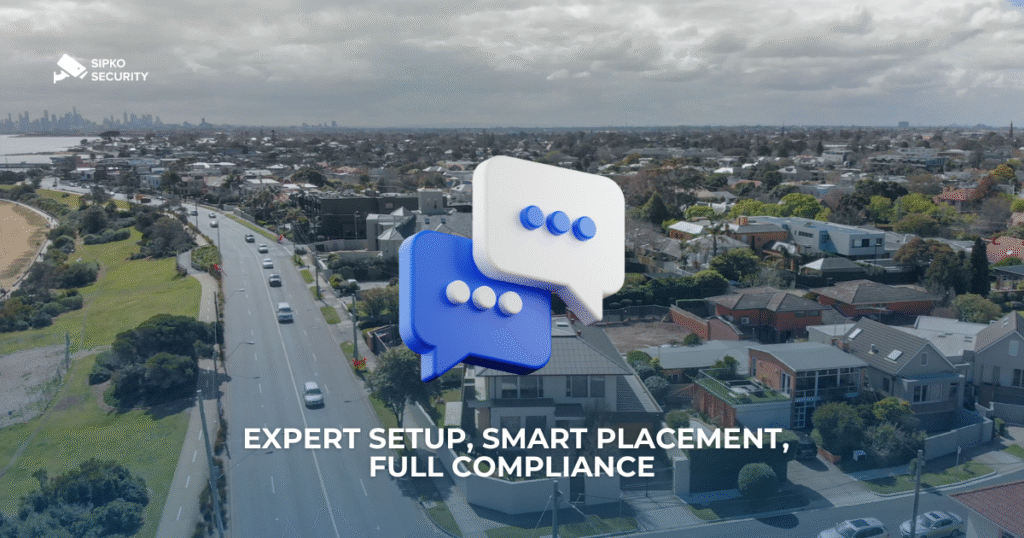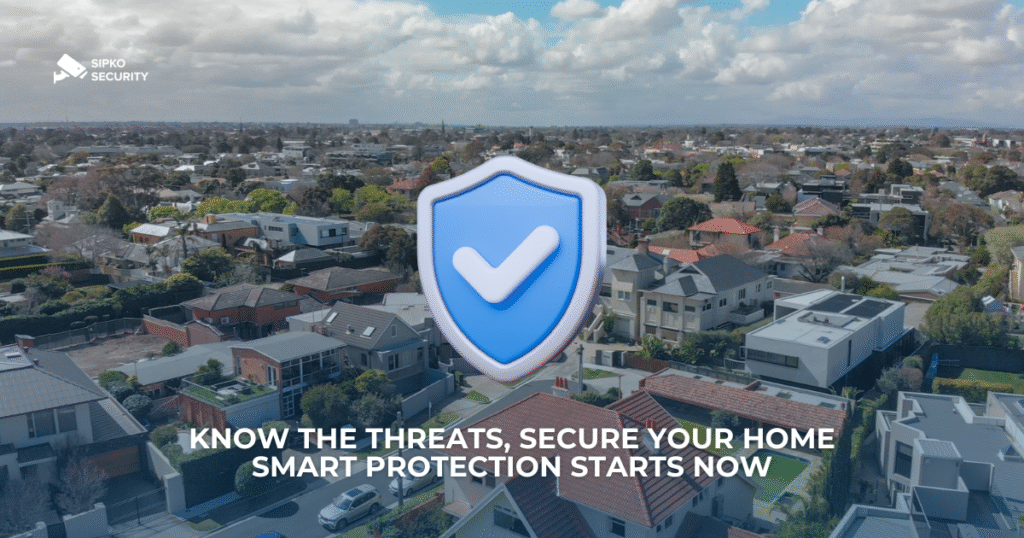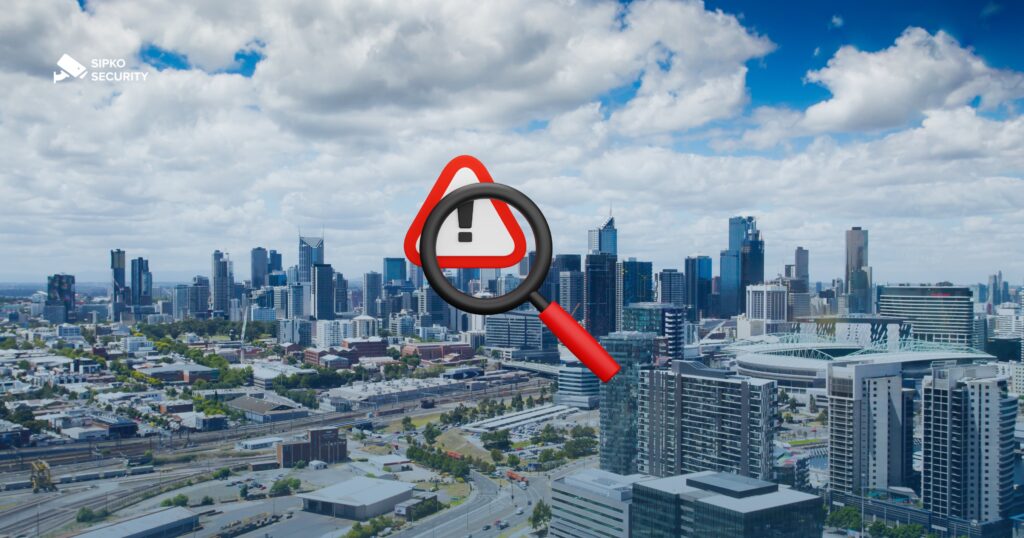This article provides a comprehensive guide to installing surveillance cameras in Brighton, Victoria, ensuring compliance with the Surveillance Devices Act 1999 (Vic) and other relevant state laws. It covers the placement of cameras on facades, fences and inside private residences, addressing legal requirements, practical considerations and best practices. A summary table is included for quick reference, along with authoritative sources.
Legal framework for surveillance in Victoria
In Victoria, the use of surveillance devices, including cameras, is regulated by the Surveillance Devices Act 1999 (Vic). This legislation regulates the installation, use and maintenance of optical surveillance devices to protect the privacy of individuals while allowing for reasonable use for security purposes. Key principles include
- Prohibition of Covert Surveillance: Covert recording without consent is generally prohibited in private settings, unless specific exceptions apply (e.g., law enforcement with a warrant).
- Consent Requirements: Recording private activities or conversations requires the consent of all parties involved, unless the recording is for a lawful purpose, such as the protection of property.
- Public vs. Private Spaces: Surveillance in public areas (such as streets) is less restricted, but cameras must not intrude into private spaces, such as neighboring properties or homes.
- Notification: While not always required, signage indicating surveillance is recommended to avoid disputes and demonstrate transparency.
In addition, the Privacy and Data Protection Act 2014 (Vic) applies to the handling of personal information captured by surveillance systems, requiring secure storage and restricted use of footage. Local council regulations, such as those of the City of Bayside (which governs Brighton), may also impose restrictions on camera placement to preserve aesthetics or heritage areas.
Placement Guidelines and Legal Considerations
1. Cameras on facades (exterior walls)
Installing cameras on the exterior of a home or building is a popular choice for monitoring entry points and perimeters. However, specific rules apply to ensure compliance.
- Legal requirements:
- Cameras must not record private activity on neighboring properties (e.g., inside houses, backyards) without consent, as this contravenes the Surveillance Devices Act 1999 (Vic), s 7.
- If the property is in a heritage area of Brighton (e.g. near Dendy Street Beach), approval may be required from the City of Bayside to ensure the installation does not affect the aesthetic or historic value of the building.
- Cameras should be positioned to focus on public areas (e.g., driveways, street fronts) or your own property to minimize privacy concerns.
- Best Practices:
- Mount cameras at a height of 4-6 meters to optimize coverage and reduce the risk of vandalism.
- Use cameras with adjustable fields of view (FOV) to avoid capturing adjacent properties.
- Install signage (e.g., “CCTV in operation”) to inform visitors and deter potential intruders.
- Practical considerations:
- Ensure cameras are weatherproof (IP66 or higher) to withstand Brighton’s coastal climate.
- Integrate with motion sensors or infrared for nighttime surveillance.
2. Cameras on fences
Fences are ideal for perimeter surveillance, but require careful planning to avoid legal issues.
- Legal requirements:
- Cameras must not record private activity on adjoining land or in public spaces beyond what is reasonably necessary for security (Surveillance Devices Act 1999, s 7).
- If the fence is shared with a neighbor, their consent may be required for installation to avoid property disputes.
- Local ordinances may restrict the height or type of equipment mounted on fences to maintain street aesthetics.
- Best Practices:
- Install cameras at a height of 3.5-4 meters to deter vandalism and ensure clear images.
- Use narrow-angle lenses for cameras along fences to focus on the perimeter of your property and avoid capturing neighbors’ property.
- Clearly indicate the presence of cameras with signage to meet privacy expectations.
- Practical considerations:
- Mount cameras to sturdy fence posts to prevent movement or damage from wind.
- Consider battery-powered or solar-powered cameras for fences without easy access to power sources.
3. Indoor cameras
Indoor cameras are used to monitor interior spaces, such as living areas or entryways, but privacy laws are stricter in private spaces.
- Legal requirements:
- All household members and regular visitors (e.g. cleaners, babysitters) must consent to being recorded under the Surveillance Devices Act 1999 (Vic), s 6.
- Covert recording inside a home is illegal unless it is for a specific lawful purpose (e.g. evidence of theft by a contractor) and strict conditions are met.
- Footage must be stored securely and not shared publicly, in accordance with the Privacy and Data Protection Act 2014 (Vic).
- Best practices:
- Use dome cameras for discreet indoor installation, typically mounted on ceilings.
- Disable audio recording unless specifically required and consented to, as audio surveillance is subject to stricter regulations (Surveillance Devices Act 1999, s 6).
- Place cameras in common areas (e.g. hallways, living rooms) and avoid private areas such as bedrooms or bathrooms.
- Practical considerations:
- Choose Wi-Fi-enabled cameras for easy integration with smartphone apps for remote viewing.
- Ensure cameras have encrypted storage (e.g., cloud or local DVR) to protect footage from unauthorized access.
Practical tips for compliance and effectiveness
- Consult Neighbours: Before installing outdoor cameras, discuss plans with neighbours to avoid disputes and ensure privacy is respected.
- Hire professionals: Hire licensed installers who are familiar with Victorian laws to ensure proper placement and compliance.
- Check Local Regulations: Contact the City of Bayside to confirm any permits required for outdoor installations, especially in heritage areas.
- Regular Maintenance: Clean lenses and check storage systems regularly to ensure optimal performance.
- Data management: Delete footage after a reasonable period of time (e.g., 30 days) unless required for legal purposes to comply with privacy laws.
Summary table: Camera placement and legal requirements in Brighton, Victoria
| Filming Location | Legal Requirements | Best Practices | Practical Considerations |
|---|---|---|---|
| Facade (external) | – Avoid encroaching on neighbors’ privacy (Surveillance Devices Act 1999, s 7). – Obtain council approval for heritage areas (City of Bayside). |
– Mount at 4-6m height. – Use adjustable FOV. – Install signage. |
– Use weatherproof (IP66+) cameras. – Integrate motion sensors. |
| Fence | – Do not record private activities on adjacent land (Surveillance Devices Act 1999, s 7). – Obtain permission from neighbors for shared fences. – Comply with local fence codes. |
– Install at a height of 3.5-4m. – Use narrow angle lenses. – Add signage. |
– Mount to sturdy posts. – Consider battery/solar power. |
| Inside the home | – Obtain consent from household members/visitors (Surveillance Devices Act 1999, s 6). – Store footage securely (Privacy and Data Protection Act 2014). |
– Use dome cameras in common areas. – Turn off audio unless authorized. – Avoid private rooms. |
– Choose Wi-Fi cameras. – Use encrypted storage. |
Sources
- Surveillance Devices Act 1999 (Vic): Victorian Legislation
- Privacy and Data Protection Act 2014 (Vic): Victorian Legislation
- City of Bayside Planning and Permits: City of Bayside
- Australian Privacy Principles: Office of the Australian Information Commissioner
This guide ensures that residents of Brighton can install surveillance cameras effectively while adhering to Victorian laws.


